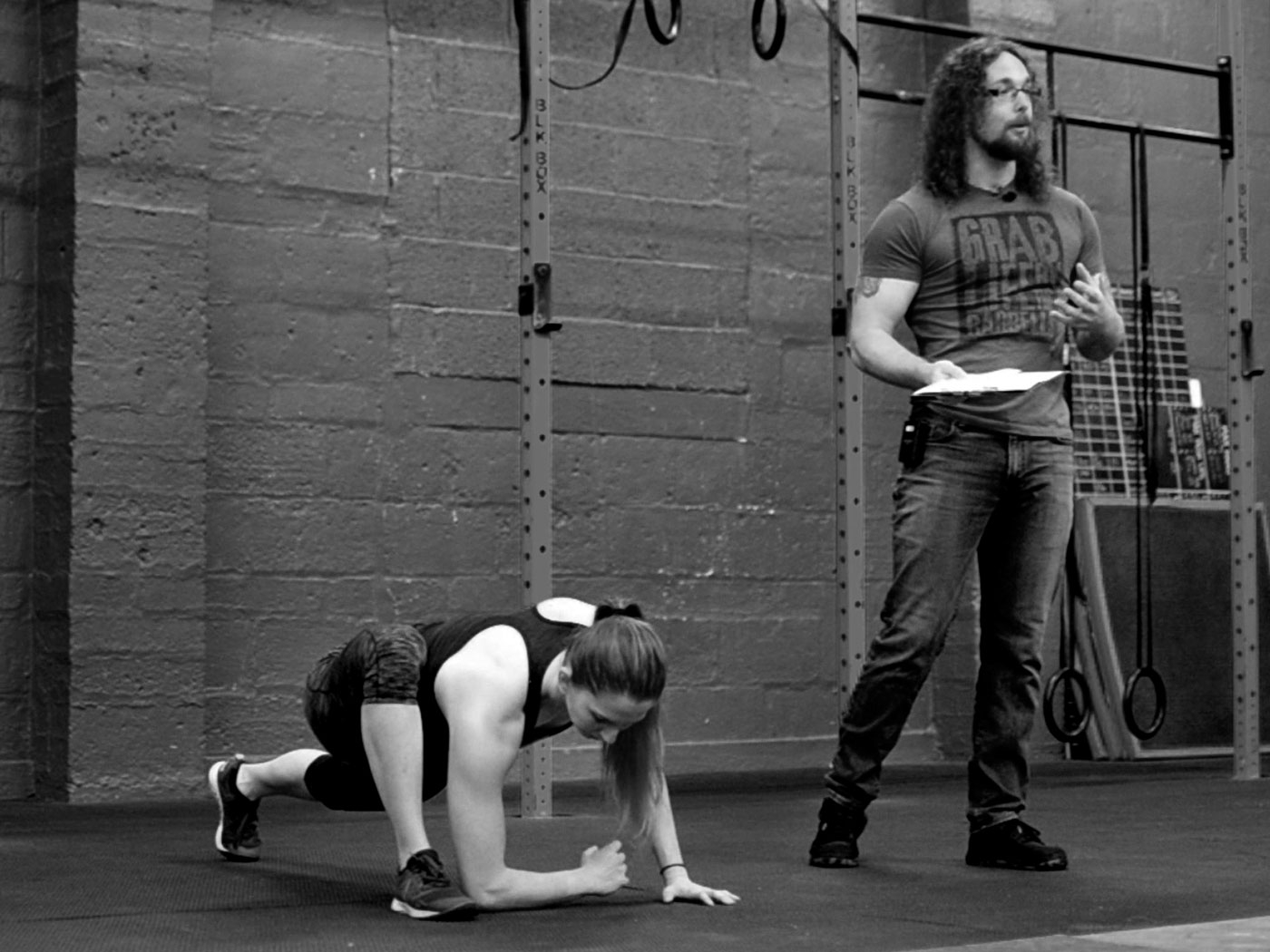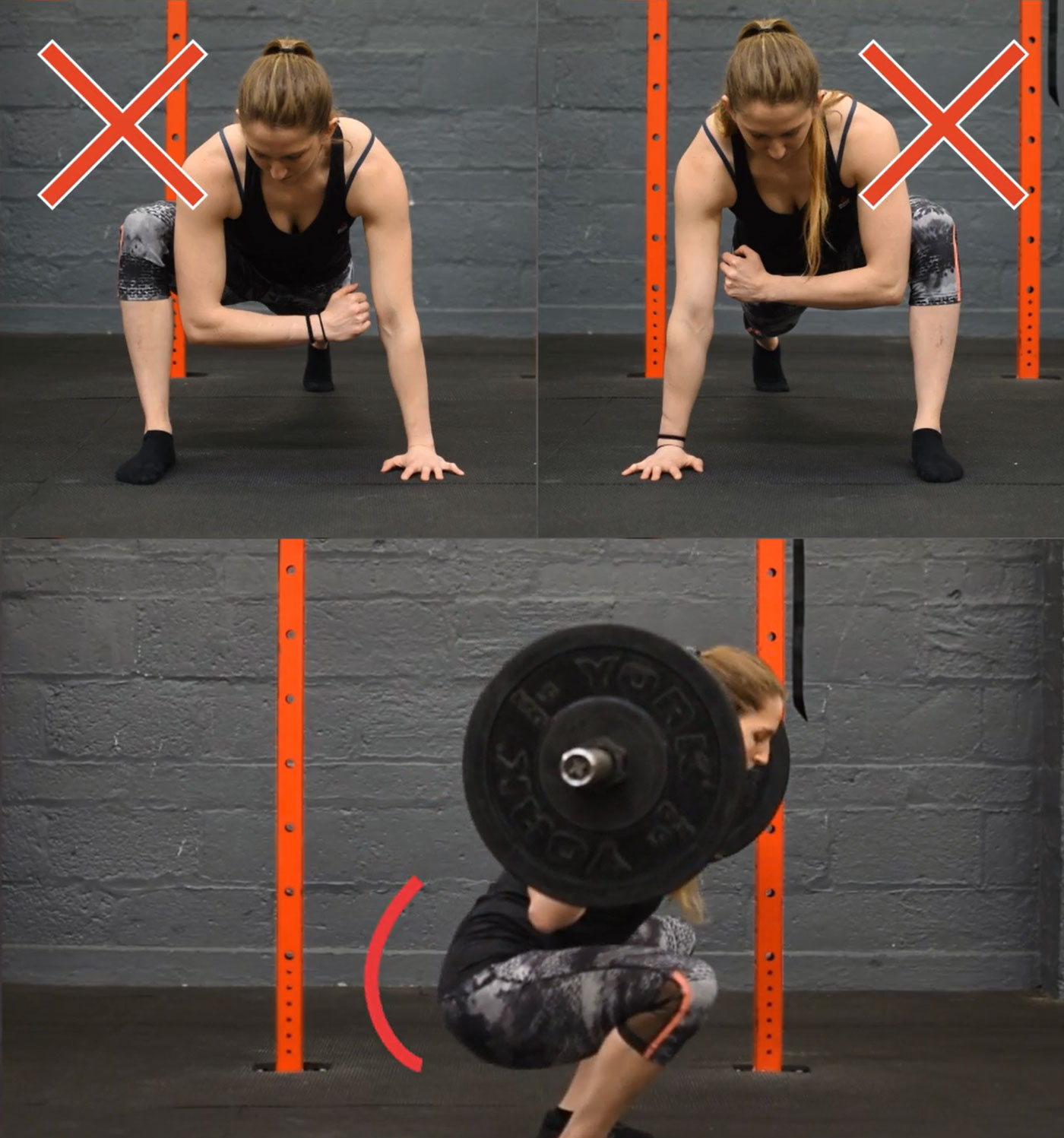Can You Pass the Deep Lunge Test?
If your hip flexion is limited on one or both sides this can spell a catastrophe for your lower back and knees over time - literally every squat or lift you’re doing could be putting your spine and knees at risk. Without proper access to the strength of your hips and glutes your body starts to compensate, which is the focus point of The Simplistic Mobility Method: creating a body that moves well to avoid compensations.
With limited hip flexion your knees will easily cave in when doing certain types of training, your lower back will HAVE to round to compensate for the immobile hips and you won’t be able to use your hamstrings properly. It starts off with aches and pains and generally feeling stiff, but add enough months/years, combined with an enthusiasm for lifting weights or playing sports, and more serious injuries can occur.
You may experience:
· Back pain
· Hip pain
· Knee pain
· Reoccurring groin injuries
· Lack of muscle engagement
· Lack of muscle awareness
· Feeling stiff all the time
So how do we address this??
How do you know what to stretch, for how long, and how much of it to do!? How do you know when your hip flexion is “good”?!
Usually you get more of a “do this, everyday… forever” sort of deal - we all know we should stretch our hips or work on our flexibility, but for how long? What are the markers for progress?
In response, I developed the Deep Lunge Test. This stretch already existed but my reasoning behind it was to have a marker, a “goal” to achieve, and it really became the heart of The Simplistic Mobility Method:
youtubeid=4pCy-BxTDnE
Can you do this? No?
Well people that move well, have no back problems, are pain free and are loving life can... so you might want to work on it!
Well people that move well, have no back problems, are pain free and are loving life can... so you might want to work on it!
Now you have your goal: get your elbow to the floor on both sides, with good form, comfortably.
No matter what your starting point it’s a position that you can start to work right away, and the benefits are immediate!
Here’s how to do it:
· Start off in a push up position then bring one foot up beside the same side hand.
· Then aim to replace the palm of your hand with your elbow, so your elbow is by your heel, maintaining a vertical shin
· Make sure your knee doesn’t creep forwards (compensating with ankle flexibility) or out to the side (compensating with hip rotation)
· Take note of where you are – video is the most effective way of tracking your progress.
· Then repeat on the other side - again, record where you get to!
A pass would be getting your elbow to the floor without compromising the position, anything else would class as a fail. Once you have your markers, you can start to analyse your hips:
If you failed evenly on both sides:
This isn’t quite as bad as it initially may seem, if you’ve failed to touch the floor, but both sides are at a similar height off the ground then at least you’re balanced! Yay, a great thing to know about your hips! But, even with this balance you’ll commonly see people who can’t touch the floor get a butt wink or an “immature squat” when they squat.
You simply don’t have the capacity to sit into your hips deeply enough, so your lower back will have to round when you try to go beyond their capacity - you’ll get away with this with little to no weight, but if you start to load this up it can be incredibly dangerous for your spine.
If you frequently get lower back pain, this could be the reason, and consistent focus on this exercise is one of the reasons The Simplistic Mobility Method is so successful for back pain. Bones are heavily influenced by the supporting muscles, in exercises such as a weighted squat we want to keep the spine in good alignment in order to be safe and avoid injury.
If there was a big difference between sides:
This could either be a pass on one side and a fail on the other; both failed but one much closer than the other; or even as subtle as you pass on both sides, but one feels much tighter than the other. Issues with this result can present itself in weird wonky sideways squats or even consistent tightness on one side of the body, either lower back, glute, hamstring or calf when lifting or running.
An imbalance between your hips is something you want to try and address as soon as you notice it – one tighter hip can twist your body subtly over time and cause so many aches and pains all over which seem to come from nowhere.
So how often should you do it?
Ideally, I recommend doing all the exercises from The Simplistic Mobility Method 4 times per week if possible, but due to the low stress on the body it’s totally ok to work on the Deep Lunge Test or some Deep Lunge Rotations every day! It’s a great warm up for the hips and for any lower body work.
When you achieve a comfortable pass on both sides, then it simply becomes a maintenance tool! You’ll find you only need a few reps and you will be ready to get stuck into the fun stuff!
The Deep Lunge Test is the best tool you can have which quickly, easily and clearly measures your hip flexibility, even helping you track how you feel day to day. You have a visible goal to achieve so you actually feel motivated to stretch!
If you want to know all the movements I use for full body mobility, pick up The Simplistic Mobility Method! The deep lunge is there, and it also contains movements for the other hip elements like rotation, extension and lateral movement and core to hip awareness. Plus, drills for your ankles, shoulders and balance! It is perfectly designed for people that don’t want to spend all their time stretching and worrying about their flexibility - master the movements and you know you have the right foundation!
READY TO GET STARTED?
View Products






